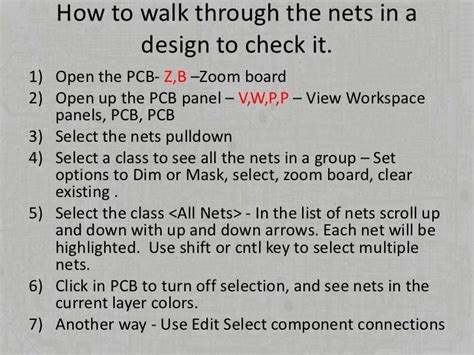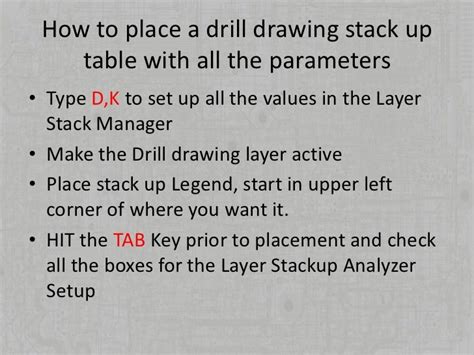1. Master Keyboard Shortcuts for Common Actions
One of the best ways to speed up your schematic design process in Altium is to learn and use keyboard shortcuts for frequently performed actions. By keeping your hands on the keyboard, you can avoid constantly reaching for the mouse and save valuable time.
Some essential Altium schematic shortcuts to memorize include:
| Shortcut | Action |
|---|---|
| Spacebar | Pan |
| Ctrl + Left-click | Pan |
| Ctrl + Right-click | Zoom |
| Ctrl + Shift + C | Copy |
| Ctrl + Shift + V | Paste |
| Ctrl + M | Move |
| F8 | Open Document Options |
There are dozens more shortcuts available. Take some time to review the full list in Altium’s documentation and incorporate the ones you use most into your workflow. Creating your own custom hotkeys for specific tasks is also possible.
Tips for Learning Altium Keyboard Shortcuts
- Print out a cheat sheet of common shortcuts and keep it near your workstation
- Each day, focus on memorizing and using 5-10 new shortcuts
- Revisit rarely used shortcuts from time to time to refresh your memory
- Consider customizing hotkeys for your most frequent commands
2. Create and Utilize Reusable Schematic Snippets
Another huge time-saver is to create reusable schematic “snippets” for commonly used circuit blocks or modules that you find yourself adding to designs repeatedly. This could include power supply circuits, microcontroller sections, sensor interfaces, etc.
By creating snippets, you can quickly import pre-built schematic sections instead of having to add and wire up the components each time. This not only saves time but also reduces the risk of errors.
How to Create a Schematic Snippet in Altium
- In your schematic, select the components and wiring that you want to turn into a reusable snippet
- Right-click on the selection and choose “Create Snippet” from the menu
- Give your snippet a descriptive name and assign parameters and supply pins if applicable
- Save the new snippet file in a designated library folder for easy future access
To use a snippet, simply open the Snippets panel and drag-and-drop the desired circuit into your schematic. Update parameters as needed and connect it to the rest of your design.
Managing a well-organized library of schematic snippets is a huge asset for electronics designers looking to maximize productivity in Altium.

3. Leverage the Power of Hierarchical Design
Hierarchical Schematic Design is essential for keeping complex projects organized and easy to navigate. Instead of having one massive, unwieldy flat schematic, break your design down into functional blocks and create hierarchies.
Benefits of hierarchical design include:
- Schematics are easier to read and understand at a glance
- Repeated circuit blocks only need to be created once
- Fewer wires crisscrossing the schematic
- Specific sections can be worked on independently
- Enabling schematic reuse across projects
Implementing Hierarchical Design in Altium
- Identify the main functional blocks or modules in your design
- Create separate schematic sheets for each block
- Add sheet symbols and assign appropriate ports for inter-sheet connections
- Create a top-level schematic sheet that connects the sub-sheets together
Effective use of hierarchy will make your Altium schematics cleaner, simpler to navigate, and faster to develop and edit. It does require some up-front planning and organization but pays dividends in the long run in terms of productivity and maintainability.

4. Automate Repetitive Tasks with Scripts
For complex or repetitive schematic editing tasks, consider using Altium’s scripting capabilities to automate the process. This could include tasks like:
- Applying specific formatting or design rules to selected objects
- Replacing component symbols throughout the schematic
- Generating BOM reports
- Performing electrical rule checks (ERC)
While writing scripts requires some programming knowledge, even basic automation can save significant time and effort. Altium Designer supports scripting in several languages including Delphi, Python, and Visual Basic.
Example Script: Replacing Component Symbols
# Load the schematic document
sch = SchServer.GetCurrentSchDocument()
if sch is not None:
# Iterate through components
for comp in sch.Components:
# Check if component has a specific parameter value
if comp.FindParameter('SimulationOnly') is not None:
# Replace the symbol
comp.SetState_SchLib('NewSymbolLibrary.SchLib', 'NewSymbolName')
sch.GraphicallyInvalidate()
This Python script searches the active schematic for components with a “SimulationOnly” parameter, and replaces their symbol with one from a specified library. Automating this type of bulk component update can save hours of tedious manual edits.
To get started with Altium scripting, check out the API documentation and online tutorials. Start with simple scripts and work your way up to more complex automation as you gain experience.

5. Stay Organized with Smart Schematic Project Practices
Finally, boost your Altium Designer productivity by incorporating some best practices for schematic project organization and management:
Use a Consistent Numbering Scheme
Establish a clear, consistent numbering scheme for sheet numbers, component designators, net names, etc. and stick to it. This will make navigating and cross-referencing between the schematic and PCB much easier. For example:
| Item | Numbering Scheme |
|---|---|
| Schematic sheets | 001, 002, 003 |
| Resistors | R101, R102, R103 |
| Capacitors | C101, C202, C203 |
| Net names | NET001, NET_SENSOR_IN |
Create a Master Project File
Use a master .PrjPCB project file to manage all your schematic sheets, libraries, output jobs, and project settings in one place. Route supply nets like GND and VCC on an “interfaces” sheet and import it into other sheets.
Maintain Project Libraries
Keep your Altium component libraries well-organized and up-to-date. Regularly check vendor websites for updated symbols and footprints. Create separate library files for different categories like resistors, capacitors, connectors, ICs, etc.
Use Informative Sheet and Component Names
Give schematic sheet files and component symbols descriptive names that clearly convey their function. Avoid cryptic or non-descriptive names like “Sheet1” or “R1.”
Backup and Version Control
Implement a regular backup system and consider using version control software like Git to track design changes and collaborate with teammates. Automate backups to run on a set schedule.
By adopting these smart organizational tactics, you’ll spend less time searching for files, fixing broken references, and reworking disorganized schematics. A little planning and structure go a long way!
Frequently Asked Questions
1. What are some of the most important Altium keyboard shortcuts to learn?
Some of the top Altium schematic shortcuts to memorize are:
– Spacebar for panning
– Ctrl + Left-click to pan
– Ctrl + Right-click to zoom
– Ctrl + M to move objects
– F8 to open Document Options
2. How can I create reusable circuit blocks in Altium?
Altium supports reusable schematic “snippets.” To create one:
1. Select the desired schematic objects
2. Right-click and choose “Create Snippet”
3. Give the snippet a name and assign parameters
4. Save the snippet to a library folder
5. Drag-and-drop snippets from the library to reuse them
3. What are the benefits of using hierarchical schematic design?
Hierarchical schematics offer several advantages, including:
– Improved readability and organization
– Ability to reuse common circuit blocks
– Fewer wires crossing the schematic
– Enables concurrent work on different sections
– Promotes Design reuse across projects
4. What kinds of repetitive schematic tasks can be automated with scripts?
Examples of schematic editing tasks that can be scripted include:
– Applying specific formatting or design rules
– Replacing component symbols globally
– Generating BOM reports
– Running electrical rule checks (ERC)
Altium supports scripting in Delphi, Python, and Visual Basic.
5. What are some best practices for organizing Altium schematic projects?
Some tips for keeping Altium projects organized:
– Use a consistent numbering scheme for sheets, components, nets
– Create a master .PrjPCB project file to manage everything
– Keep component libraries up-to-date and well-organized
– Use descriptive names for sheets and components
– Implement regular backups and version control
By incorporating these helpful tips into your Altium Designer workflow, you’ll be well on your way to faster, more efficient schematic design. Remember, investing time in optimizing your productivity will pay off in the long run with more successful projects completed in less time. Happy designing!

No responses yet